When you pick up a prescription at the pharmacy, you might be handed a pill that looks nothing like the one your doctor prescribed. It’s a different color, maybe a different shape, and it has a different name. But if it’s rated as therapeutically equivalent by the FDA, it’s meant to work the exact same way. This isn’t guesswork. It’s science-carefully coded and tracked in a public database called the Orange Book.
What the Orange Book Actually Does
The FDA’s Approved Drug Products with Therapeutic Equivalence Evaluations, better known as the Orange Book, isn’t just a list of approved drugs. It’s the official guide that tells pharmacists and doctors which generic versions can be swapped in for brand-name drugs without changing how well they work or how safe they are. First published in 1980, it became the backbone of the U.S. generic drug system after the Hatch-Waxman Act of 1984. That law made it easier for companies to bring cheaper versions of drugs to market, but only if they could prove they were truly equivalent.Today, the Orange Book lists over 14,000 approved drug products. About 90% of them-nearly 12,600-have an ‘A’ rating. That means they’re approved for substitution. The rest? They’re flagged with a ‘B’ or other codes, and that’s where things get tricky.
The Letters That Matter: A vs. B Codes
The FDA doesn’t use numbers or complicated jargon. It uses simple letters. The first letter tells you everything you need to know:- A means the drug is therapeutically equivalent to the brand-name version. You can swap it without hesitation.
- B means the FDA hasn’t confirmed that substitution is safe or effective. It doesn’t mean the drug doesn’t work-it just means there’s not enough data to say it’s interchangeable.
But it’s not that simple. The ‘A’ code has subcategories. You’ll see AB, AB1, AB2, AB3, AB4. These tell you which brand-name drug the generic was compared to. If a drug has two different brand-name versions on the market, the FDA tracks which one each generic was tested against. That’s why AB1 and AB2 exist. If your doctor prescribes a specific brand, your pharmacist needs to match the right AB code to avoid a mismatch.
‘B’ codes are more complex. Here’s what they mean:
- BC = Extended-release forms with bioequivalence questions
- BD = Known bioequivalence problems
- BE = Delayed-release oral products
- BT = Topical products (like creams or gels) with unclear absorption
- BN = Aerosol or nebulizer products
- BP = Potential bioequivalence issues
- BR = Suppositories or enemas meant for systemic effect
- BS = Drug standard problems
- BT = Topical products with bioequivalence issues
- BX = Not enough data to rate
These aren’t random labels. They’re based on real scientific gaps. For example, a cream that looks identical to a brand-name product might not absorb the same way through the skin. Standard blood tests can’t always prove it works the same. So the FDA gives it a BT code-not because it’s dangerous, but because substitution isn’t guaranteed to be safe.
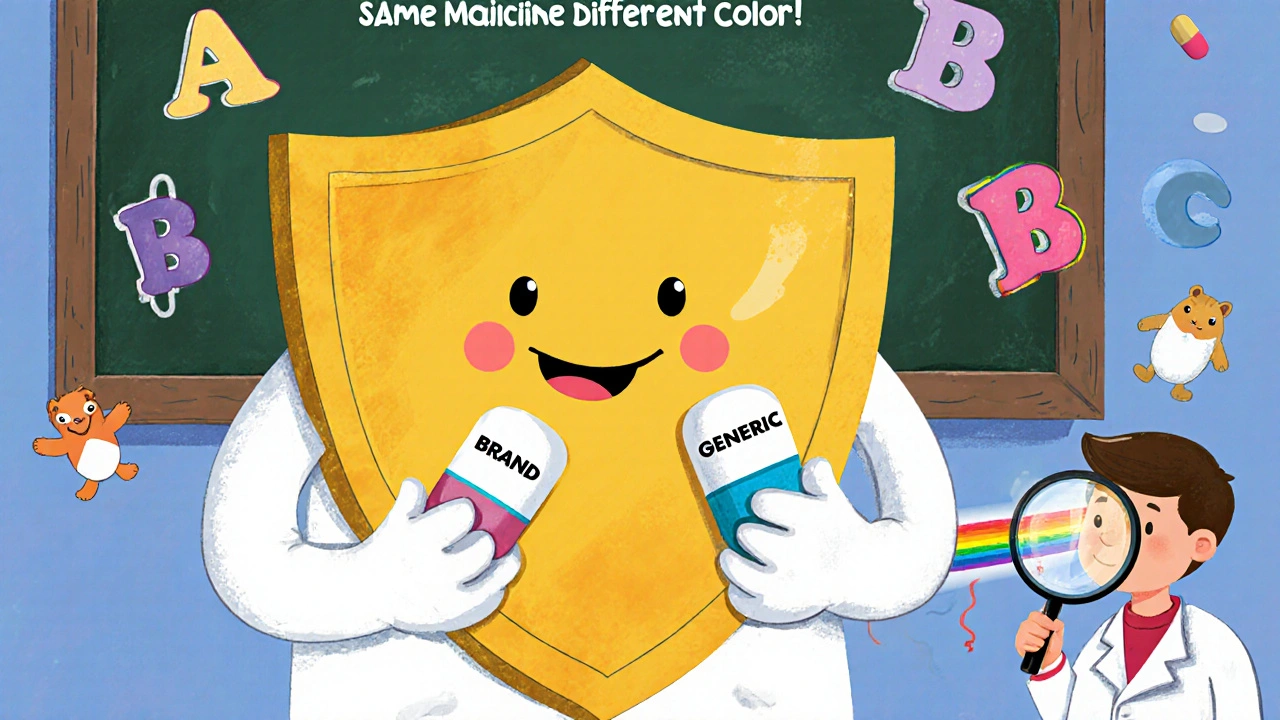
Why This System Exists
The goal isn’t to limit choice. It’s to protect patients. In the 1970s, some generic drugs were approved based on paperwork alone-not real testing. Patients got sick. Some died. The FDA had to step in. The Orange Book system was created to make sure every generic drug meets the same standards as the brand.It works. Since the system started, there hasn’t been a single documented case of a patient being harmed because they took an FDA-approved generic instead of the brand. That’s a huge win. And it saves money. Generic drugs make up 90% of prescriptions filled in the U.S., but only 23% of total drug spending. That’s over $370 billion saved each year.
But the system wasn’t built for today’s complex drugs. Most of the Orange Book’s ratings were designed for simple pills-immediate-release tablets you swallow. That’s easy to test. You measure how much of the drug enters the bloodstream. Done.
But what about an inhaler? A skin patch? A long-acting injection? These don’t behave like pills. Their effectiveness depends on how the drug is released, how it’s absorbed, even how it’s stored. Standard blood tests don’t capture that. And yet, the FDA still has to rate them. That’s why more ‘B’ codes are showing up-for complex generics. Between 2018 and 2022, applications for these products with ‘B’ ratings jumped 22%.
What Pharmacists and Doctors Really Do
Pharmacists rely on the Orange Book every day. A 2022 survey of 1,200 independent pharmacists found that 87% said TE codes make substitution easier. About 73% check the Orange Book at least once a week. On average, they spend 2.7 minutes per prescription verifying the code. That adds up. But it’s worth it. Those minutes translate to billions in savings.Doctors, however, aren’t always on the same page. A 2022 AMA survey showed that 42% of physicians are confused by ‘B’ codes. Some think a ‘B’ means the drug is unsafe. Others don’t know what it means at all. That leads to problems. In 28% of cases, pharmacists refused to substitute a ‘B’-rated drug-even when it was clinically appropriate-because they weren’t sure.
And here’s the kicker: 38 states require pharmacists to notify the prescribing doctor if they’re substituting a ‘B’-rated product. That means extra calls, extra paperwork, extra delays. The system works well for simple drugs. For complex ones? It’s a bottleneck.
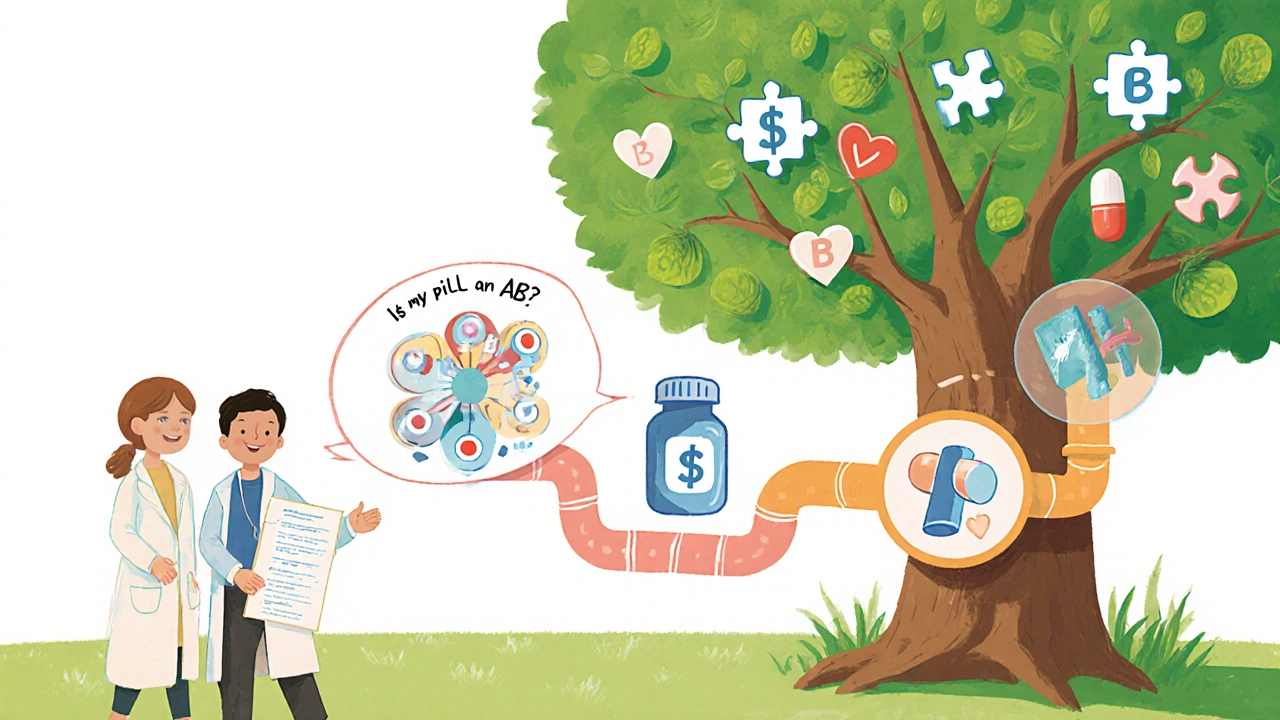
How the FDA Is Fixing the Gaps
The FDA knows the system has limits. In 2022, they released a draft guidance titled Evaluation of Therapeutic Equivalence-a major update aimed at modernizing how they rate complex products. They’re asking for public input and pushing for better ways to test inhalers, topical creams, and injectables.One big change? More Product-Specific Guidances (PSGs). These are detailed roadmaps for companies trying to get their generic approved. As of August 2023, the FDA has published 1,850 of them. Each one tells manufacturers exactly what data they need to prove equivalence-for that specific drug. That’s helping more complex generics get ‘A’ ratings.
The FDA’s 2023-2027 plan aims to cut ‘B’-rated complex generics by 30% by 2027. That means fewer confusing codes, fewer delays, and more affordable options for patients.
Looking ahead, experts believe real-world data-like how patients actually respond to these drugs in clinics-will play a bigger role. Right now, the system relies on lab tests. In the future, it might use patient outcomes too.
What You Need to Know
If you’re on a generic drug:- Check the label. Does it match the TE code in the Orange Book? If it’s an ‘A’, you’re good.
- If you’re switched to a new generic, ask your pharmacist: ‘Is this an AB-rated product?’
- Don’t assume a ‘B’ means the drug doesn’t work. It might. But it hasn’t been proven interchangeable yet.
- If you notice a change in how you feel after switching generics-talk to your doctor. It’s rare, but it happens.
The system isn’t perfect. But it’s the best we have. And it’s getting better. Every year, more generics get approved. More patients get access to affordable medicine. And every time a pharmacist swaps a brand for a generic with an ‘A’ code, someone saves money-and maybe even saves a life.
What does an AB code mean on a generic drug?
An AB code means the generic drug has been tested and approved by the FDA as therapeutically equivalent to the brand-name drug. It has the same active ingredient, strength, dosage form, and route of administration, and it has passed bioequivalence testing-meaning it works the same way in the body. Pharmacists can legally substitute it without needing a new prescription.
Can I be switched from a brand-name drug to a generic without my doctor’s permission?
In 49 U.S. states, yes-if the generic has an ‘A’ rating. Pharmacists are allowed to substitute without asking the doctor. But if the drug has a ‘B’ code, most states require the pharmacist to notify the prescriber first. Some states also require the patient to consent. Always check your state’s pharmacy laws.
Why do some generic drugs have a B rating?
A B rating means the FDA hasn’t determined the generic is therapeutically equivalent to the brand. This usually happens with complex products like inhalers, topical creams, or extended-release pills, where standard bioequivalence tests can’t fully prove they work the same way. It doesn’t mean the drug is unsafe-it just means more data is needed before substitution is approved.
Are over-the-counter (OTC) drugs rated with TE codes?
No. The FDA’s therapeutic equivalence codes only apply to prescription drugs. OTC medications aren’t evaluated or coded in the Orange Book. You can still compare ingredients yourself, but there’s no official FDA substitution rating for things like ibuprofen or antacids.
How often is the Orange Book updated?
The FDA updates the Orange Book monthly. New drug approvals, code changes, and withdrawals are posted regularly. Pharmacists and prescribers are expected to check the latest version before making substitution decisions. The online version is free and searchable at the FDA’s website.
Do other countries use the same system as the FDA?
No. The European Medicines Agency (EMA) and other international regulators don’t use a letter-based code system. Instead, they publish detailed scientific reviews for each generic drug. The FDA’s system is unique in giving pharmacists a quick, clear yes-or-no answer for substitution. That’s why it’s so widely used in U.S. pharmacy practice.

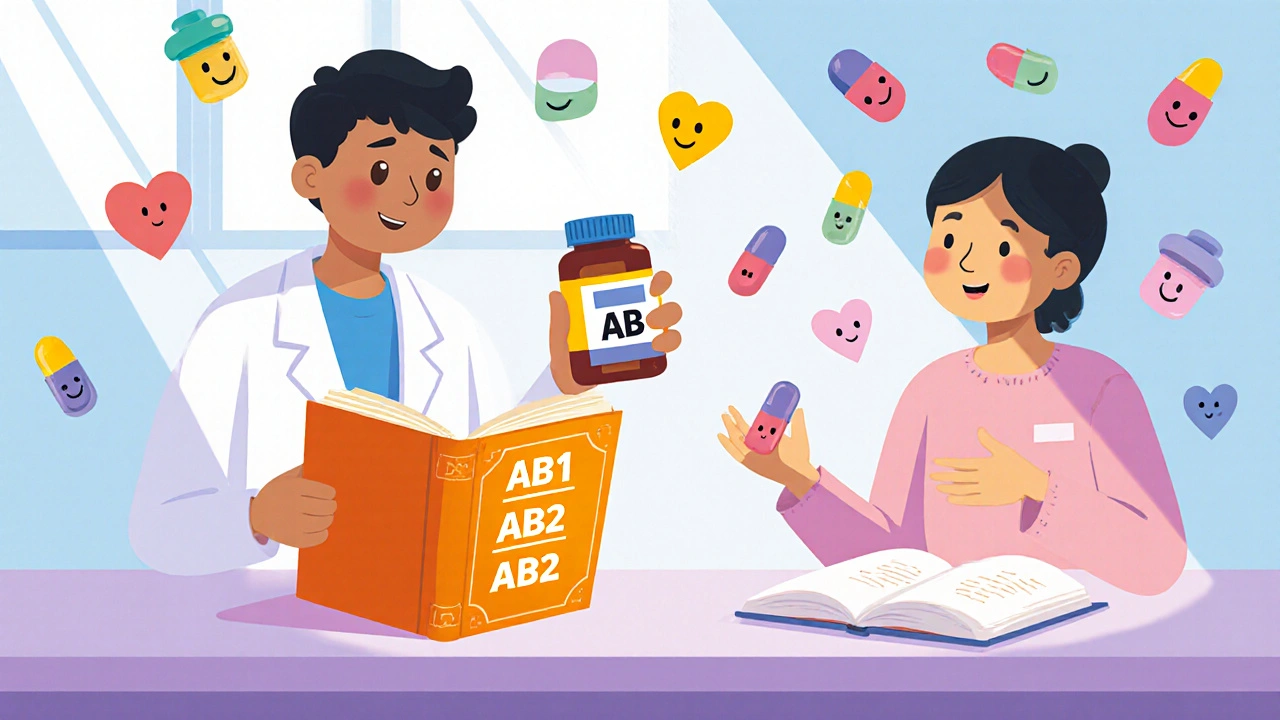
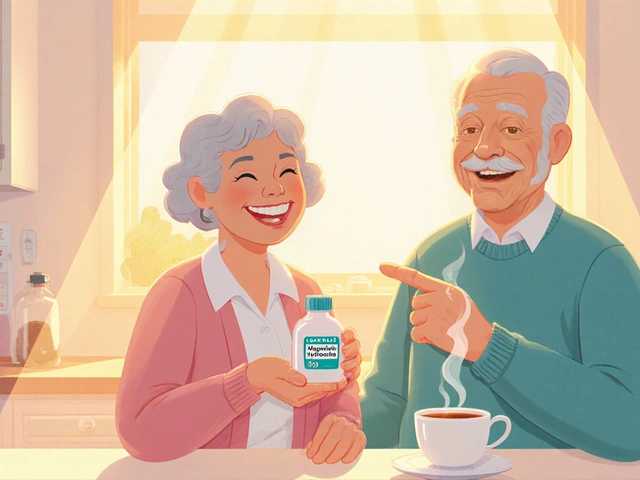
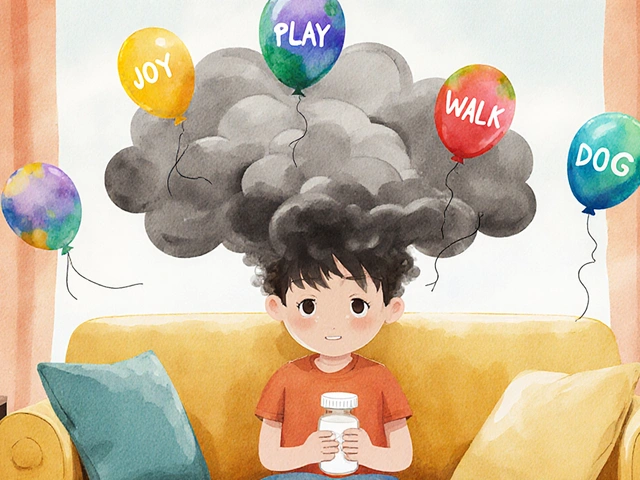

10 Comments
Gary Lam
So let me get this straight - the FDA gives a drug an 'A' rating and suddenly we’re all supposed to trust that a little blue pill is just as good as the big red one? I mean, I get the savings, but have you seen the packaging on some generics? Looks like they were designed by a toddler with a crayon. Still… I’ll take the $5 version over the $50 one any day. Just don’t ask me to explain why my anxiety meds suddenly make me want to nap in a dumpster.
Jennie Zhu
Therapeutic equivalence evaluation, as codified under the Orange Book framework, constitutes a foundational pillar of pharmacoeconomic policy in the United States. The AB classification system, derived from rigorous bioequivalence protocols including Cmax and AUC metrics, enables standardized substitution protocols that mitigate therapeutic variability. The presence of B-rated products, particularly those designated as BT or BC, reflects residual uncertainty in pharmacokinetic absorption profiles, especially for topically administered or extended-release formulations. Regulatory harmonization remains imperative to ensure clinical safety across heterogeneous patient populations.
Kathy Grant
I think about this system like a quiet handshake between science and survival. The FDA didn’t just create a code - they built a lifeline for people who choose between rent and refills. That AB rating? It’s not just letters. It’s someone’s insulin, their blood pressure med, their last shot at feeling human. And yeah, the B codes are frustrating - like being told your favorite song is ‘almost’ right. But the fact that we’re even trying to measure skin absorption or inhaler delivery? That’s hope in a lab coat. I just wish more doctors knew what those letters meant. We’re saving billions, but we’re still leaving people confused at the counter.
Robert Merril
B codes are a mess and everyone knows it. I got switched from AB1 to AB2 and suddenly my migraines turned into a full on symphony of doom. Turns out the new generic used a different filler and my brain said NOPE. The FDA should just admit they cant test inhalers properly and stop pretending they can. Also why is BT listed twice in the list? Typo or coverup? Either way im not trusting my asthma meds to a spreadsheet anymore
Roberta Colombin
It’s important to remember that behind every generic drug is someone who needs it. Maybe they’re on a fixed income. Maybe they’re a single parent. Maybe they’re just trying to survive. The Orange Book isn’t perfect, but it gives us a way to make sure everyone - not just those who can afford the brand - gets the medicine they need. Let’s keep pushing to make it clearer, not more complicated. We can do better, and we should.
Dave Feland
The Orange Book is a controlled narrative. The FDA’s 'A' ratings are politically manufactured to justify the pharmaceutical industry’s profit-driven consolidation. Did you know that many 'A'-rated generics are manufactured by the same parent companies that produce the brand-name versions? The 'B' codes? They’re not about science - they’re about delaying competition until the patent expires on the next billion-dollar drug. This isn’t patient protection. It’s regulatory theater.
Ashley Unknown
Okay so here’s the TRUTH nobody wants to admit - the FDA doesn’t test generics at all. They just look at the paperwork and say ‘sure, whatever’. I know someone who took a generic version of her seizure med and went into status epilepticus. The hospital said it was ‘bioequivalence variance’. But guess what? That generic was made in a factory in China that the FDA hasn’t visited since 2017. And now they want to expand this system to inhalers and patches? Are you kidding me? They don’t even know what’s in the powder. I’ve seen the reports. The FDA outsources 80% of inspections. This isn’t science - it’s a lottery with your life as the prize. And don’t even get me started on the fact that they list BT twice. That’s not a typo. That’s a cover-up. Someone’s hiding something. I’m not taking another generic until Congress investigates. I’m not a guinea pig.
Georgia Green
I’m a pharmacist and I check the Orange Book every day. The B codes are frustrating, especially with transdermal patches. One brand uses a different adhesive, and even though the drug content is the same, the skin absorption can vary. We’ve had patients report reduced effect - not side effects, just less relief. I always call the doctor if it’s a B-rated patch. It’s a pain, but it’s worth it. The system’s not perfect, but it’s the best we’ve got. Just wish more people knew how to read the codes.
Christina Abellar
My mom was switched to a generic blood pressure med last year. No issues. She’s been stable for 14 months. The Orange Book saved her hundreds a month. I’m grateful for the system - even with its flaws.
Eva Vega
The therapeutic equivalence evaluation framework, particularly the application of Product-Specific Guidelines (PSGs), represents a significant advancement in regulatory science for complex drug products. The introduction of bioequivalence endpoints beyond Cmax and AUC - including dissolution profiles, particle size distribution, and in vitro-in vivo correlation (IVIVC) models - enables more robust characterization of non-oral formulations. The FDA’s targeted reduction of B-rated products by 2027 is a scientifically grounded objective that aligns with global harmonization efforts in pharmaceutical quality.